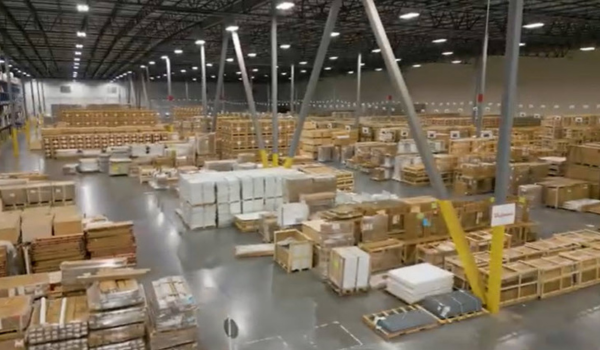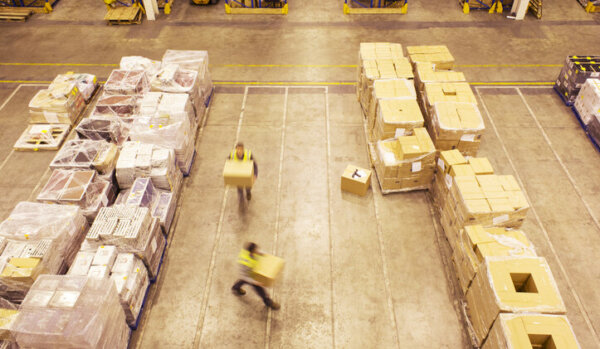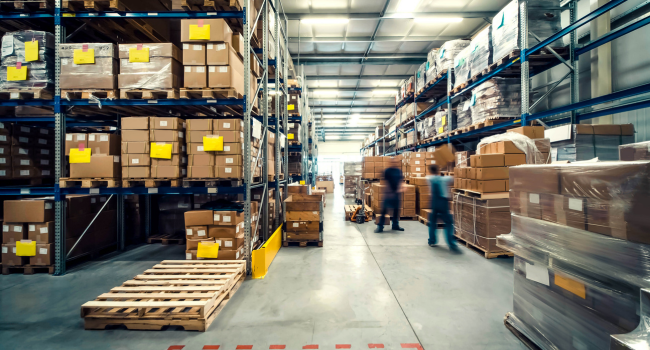Implementing store remodels, openings, and conversions can be a chaotic process that ultimately leaves little time to step back and ask, “Are we spending as wisely as we could be?”
Unfortunately, that can mean missing out on numerous cost-saving opportunities.
Take, for example, your process for retail fixtures, furniture, and equipment (FF&E). If you rely on vendor-direct, just-in-time delivery for FF&E, you’re using an approach fraught with inherent inefficiencies and unnecessary price leaks.
But it doesn’t have to be that way. In the following we’ll look at the most likely places you’re spending too much on your FF&E program. In the process, we’ll illustrate how an alternative approach—FF&E consolidation—can save you significant money.
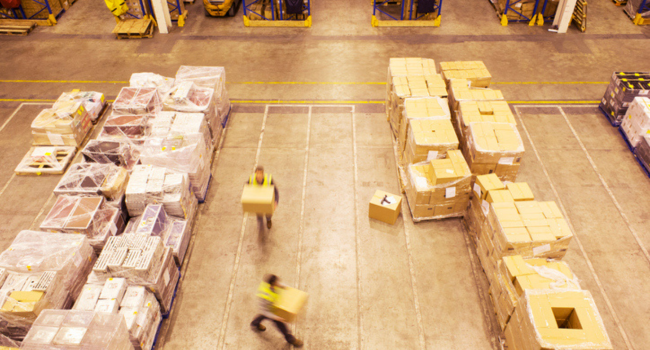
The FF&E Consolidation Model
FF&E consolidation involves partnering with a consolidator who receives and warehouses the FF&E you need for future store projects. The consolidator also inspects, organizes, builds custom pallets (if needed), and ships FF&E to specific store sites precisely when needed.
This process can generate sizable savings compared to your current approach. Let’s take a closer look at how.
1. The price (and pain) of using a less-than-truckload shipping network
A vendor-direct approach for your FF&E typically involves using a multi-hub system of less-than-truckload (LTL) shipments. This is an expensive, inefficient way to move your freight because it requires more trucks on the road hauling smaller amounts of your freight.

Unfortunately, this scenario is all too common. “When you ship using an LTL model, it’s going to mean paying a much higher cost per pallet,” says Phil Vines, Director of Business Development for Store Opening Solutions. “And you’d be surprised how much that can add up with dozens of store projects.”
Save on shipping and delivery by using full truckloads
With FF&E consolidation, you have your own warehouse space. This not only lets you order larger volumes for multiple stores all at once but also saves you money through more full truckload (FTL) use.
And when it’s time for your consolidator to ship to a store site, you’ll likely be saving money yet again thanks to FTL shipping. That’s because your consolidator can fill up a truckload with your fixtures and with the store supplies you’re warehousing with them.
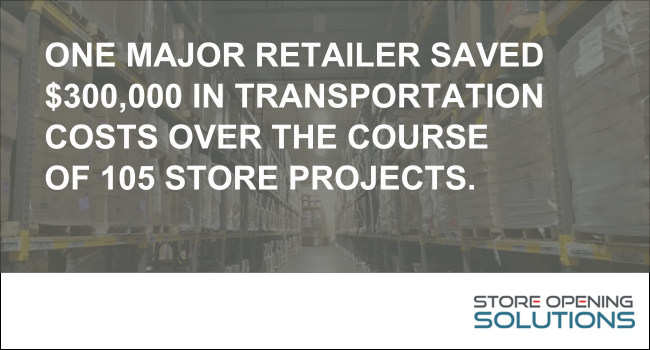
How big of a deal is the FTL factor? One major retailer saved $300,000 in transportation costs over the course of 105 store projects just by switching to an FF&E consolidation model.
2. The cost of installation delays (and installer callbacks)
Vendor-direct orders that need to arrive just in time don’t always do that, and fixture deliveries that trickle in over days can delay the installation process.
Even worse, if items are so late that they can’t be installed in the designated project window, you may have to keep installers longer (if that’s even an option). Or, you’ll need to call them back. Neither scenario will be cheap.
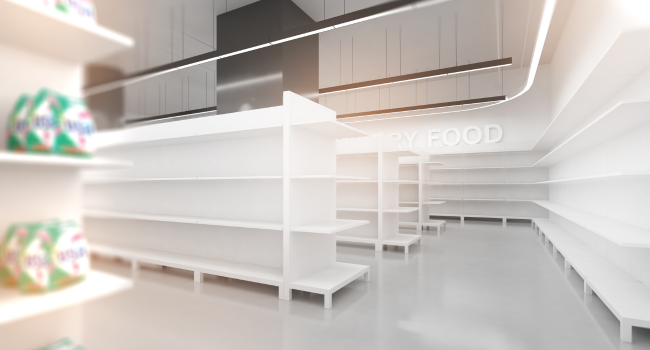
Reduce installation delays and compress installation times
Remember, with consolidation the FF&E you need for upcoming projects is already warehoused. So when you make a store-specific order, your FF&E will arrive all at once.
This makes just-in-time deliveries much more reliable and helps installations stay on track. In fact, the consolidation factor can even empower you to compress installer timelines, negotiate a shorter setup schedule, and ultimately pay for fewer installation hours.
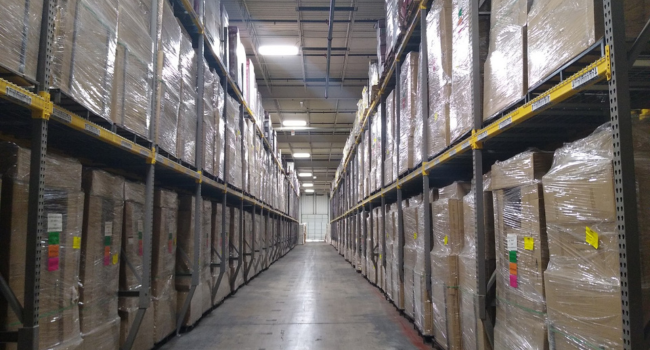
3. The missed savings from strategic bulk purchasing
Relying on vendor-direct, just-in-time shipments often means placing individual store orders intermittently over the course of a year. That’s not only time-consuming but also unnecessarily expensive.
More specifically, all the individual production runs you’re requesting can mean missing out on bulk rate discounts.
Take advantage of bulk rate purchasing
The designated warehouse space you have through consolidation allows you to potentially place orders for an entire store program further in advance.
Among the advantages to that are the significant savings you can generate through your vendors’ bulk rate or tiered pricing plans for larger orders.
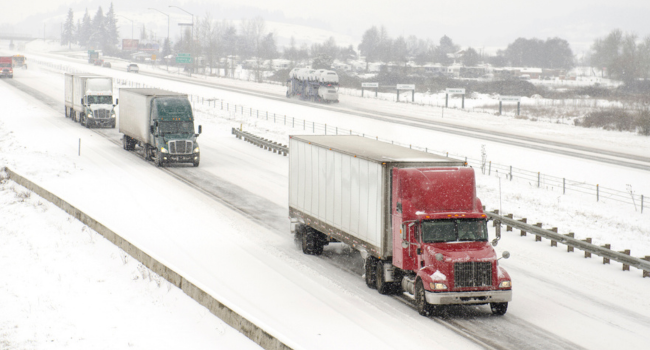
4. The additional cost creep from multiple sources
When delivery trucks roll but a store’s schedule has shifted, you’ll have to react—and likely pay for temporary (and expensive) storage solutions.
There’s also the reality of shipping through an LTL network: Your orders are subjected to numerous fork-lift touches as they’re loaded and unloaded repeatedly at various shipping hubs, making damaged or missing items more likely. When that happens, you’ll pay just about anything to overnight critical FF&E, assuming that’s even possible.
And let’s not forget about your busy team. Having them track—and often chase—hundreds of orders is not only stressful but also inefficient. Think of what they could be doing instead.
FF&E consolidation: Reduce or eliminate unexpected fees and run more efficiently
Consolidation enables you to avoid both the scramble and the added costs that come with schedule changes. For example, if a shipment is already en route but a store isn’t ready for it, all the driver needs to do is bring it back to the warehouse. Your consolidator will unload your FF&E at no extra cost.
Also, since your dedicated consolidation team inspects your orders for missing and damaged items, unfortunate delivery surprises at store sites are much less likely—likewise, the need for costly rush orders.
And regarding your current staff, consolidation can reduce their stress and improve their productivity. More specifically, it empowers them to manage FF&E inventory levels rather than dozens of vendors and hundreds of orders.
5. Losing revenue opportunities from delayed soft openings
And what about the threat of lost revenue? When store-critical FF&E items like cash wraps, registers, or shopping carts don’t arrive on time, you might have to push back store opening dates.
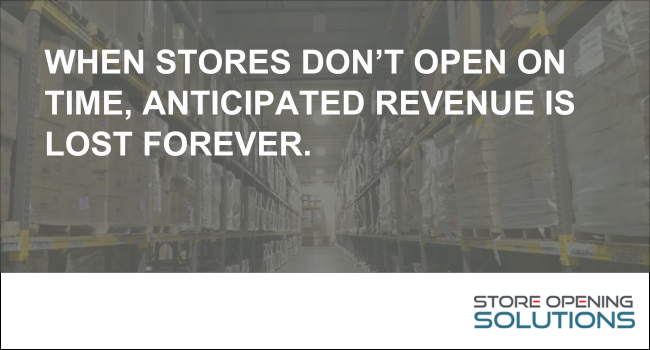
“Unfortunately, that’s the risk you face when you live and die by perfectly timed vendor-direct deliveries. And when stores don’t open on time, anticipated revenue is lost forever. That’s not the kind of news you want to bring back to executives and shareholders,” says Vines.
Generate more revenue by opening sooner
With consolidation, ALL your needed FF&E items are already at the warehouse, ready for delivery to your site on day one. Now you’re coming about as close as possible to eliminating soft opening delays due to FF&E-related reasons.
And with the various advantages we’ve covered above—like compressed installation and store set-up times—you could even move soft openings up in your calendar. That means ringing in sales that weren’t even possible before.
Take the Next Step to See Your True Cost-Savings Potential
FF&E consolidation can improve your efficiency and save you significantly. But you don’t have to take our word for it. Take advantage of Store Opening Solutions’ free FF&E program audit.
We analyze factors like those described above for your specific program. We then calculate what you could actually be saving by opting for FF&E consolidation.
About Store Opening Solutions
We support the strategic vision of retail organizations with focused expertise in the consolidation and installation of store fixtures and equipment. Our dedicated team embraces your vision and partners with you to create appropriate inventory control processes.





